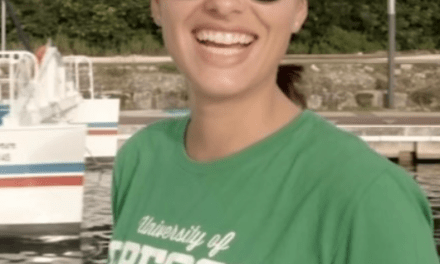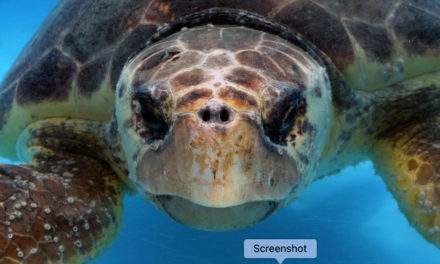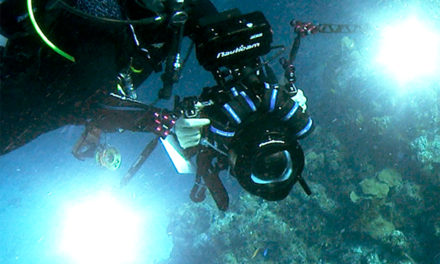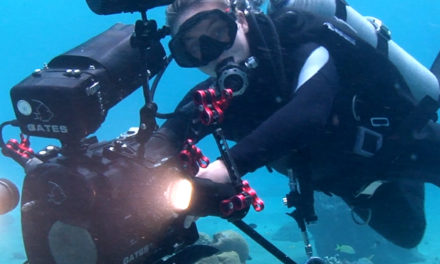Following the recent Cocos and the Galapogos, Dr Sylvia Earle’s Mission Blue Foundation has declared The Nusa Pendida Marine Protected Area another hope-spot, in another great triumph for the sea!
This comes just a short time after the recent declaration of the worlds first marine migratory species hope spot, which Mission Blue declared between Cocos and the Galapogos islands, one of the first bi-national marine protected areas in the world. Known as the Cocos-Galapagos Swimway, this Hope Spot is a 120,000-kilometer migratory underwater highway that connects the National Parks of two sovereign nations – Costa Rica’s Cocos Island National Park with Ecuador’s Galapagos Marine Reserve – both of which are UNESCO World Heritage Sites. It highlights the need to implement cutting-edge solutions to protect highly migratory species, such as sea turtles and sharks in the Eastern Tropical Pacific.

Marine Migratory Species in the Eastern Pacific – Mission Blue – Dr Sylvia Earle
A short trip from Bali, the Nusa Penida MPA covers an area of 20,057 hectares surrounding Nusa Penida and two smaller neighboring islands, Nusa Ceningan and Nusa Lembongan.
The area is home to hundreds of species of coral and fish, including a resident population of reef manta rays (Mobula alfredi) and the larger oceanic manta (Mobula birostris), both of which are listed as vulnerable to extinction on the IUCN (International Union for Conservation of Nature). It is one of the best places in Indonesia to encounter manta rays and the southern sunfish, and in 2008 was identified as a site with a high livelihood dependency on marine resources and a critical area for marine biodiversity, where 48,000 members of traditional villages rely on the sea for their livelihoods.

Nusa Penida Hope Spot – Mission Blue – Dr Sylvia Earle
The Marine Protected Area was first established in 2010 by the local Klungkung District Government and Bali Province governments, together with the Coral Triangle Centre (CTC), a Bali-based marine conservation and education foundation. Protective measures were put in place to prevent damage to the local environment through a rapid rise in tourism, unsustainable fishing practices and a growth in local seaweed farming. The MPA won awards in 2013 and 2015 from Indonesia’s Ministry of Marine Affairs and Fisheries for its management effectiveness. The new Mission Blue hope spot supports the goal of continuing to increase management effectiveness of the area and better enablement of the MPA to sustain community livelihoods and marine biodiversity, including level of compliance with existing regulations, socio-economic progress, improved education around marine resources, and establishment of regulations regarding the number of visitors to the MPA.
Dr. Sylvia Earle, Founder of Mission Blue, says, “Ideally, in order to recover much that’s been lost, we need to establish really large places where we don’t extract the wildlife that’s there. However, it’s also important to respect the coastal communities that have a long history of supporting themselves by taking wildlife from the ocean. The goal is to do what they’re doing in this treasured place in Bali, where people are looking at the whole picture – they are finding methods to sustain themselves in a way that’s both good for the ocean and good for us.”
Nengah Bagus Sugiarta, Head of the Bali Province MPA Management Unit explains, “The MPA is beneficial to the local community because the utilization of the area is managed sustainably. The community hopes to achieve balance between utilization and conservation.”
The Nusa Penida Marine Protected Area Hope Spot has the potential to inspire thousands of tourists, students and the entire world as a Coral Triangle Center learning site, exemplifying how marine protected areas in Indonesia can be collaboratively established and effectively managed through the joint efforts of communities, businesses, NGOs and governments.
Hope Spots are special places that are critical to the health of the ocean. Hope Spots are about recognizing, empowering and supporting individuals and communities around the world in their efforts to protect the ocean. Dr. Sylvia Earle introduced the concept in her 2009 TED talk and since then the idea has inspired the establishment of 123 Hope Spots across the planet. Some are large, some are small, but they all provide hope!

Manta ray – Guy Chaumette – Liquid Motion®
More: https://mission-blue.org/2020/05/worlds-first-bi-national-marine-protected-area-gains-momentum-as-a-hope-spot/
https://mission-blue.org/2020/05/






